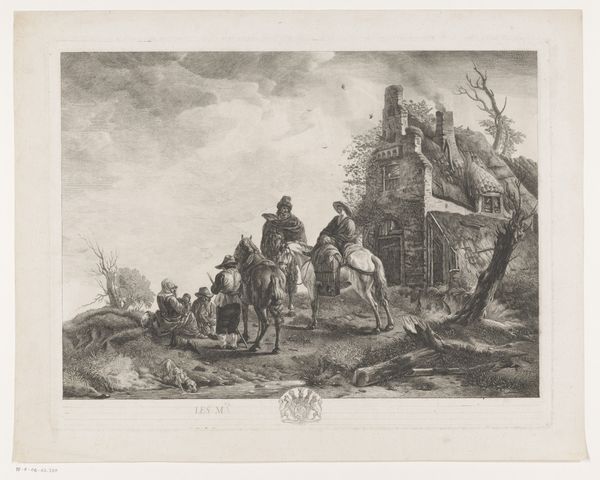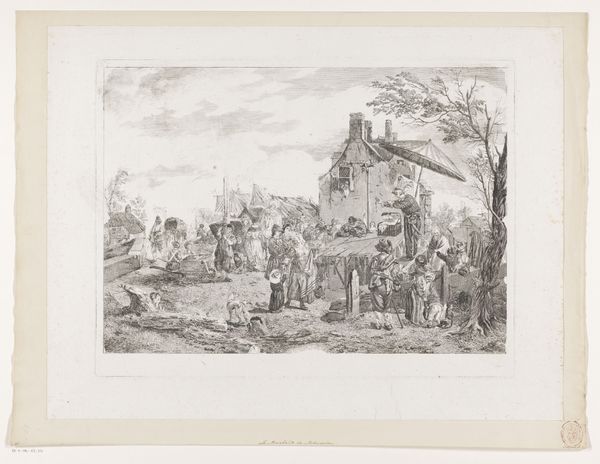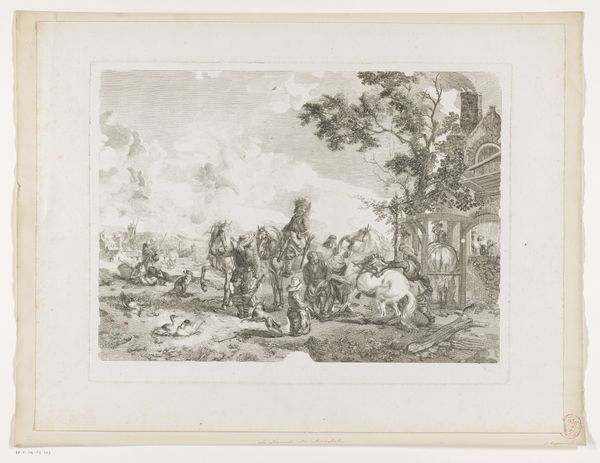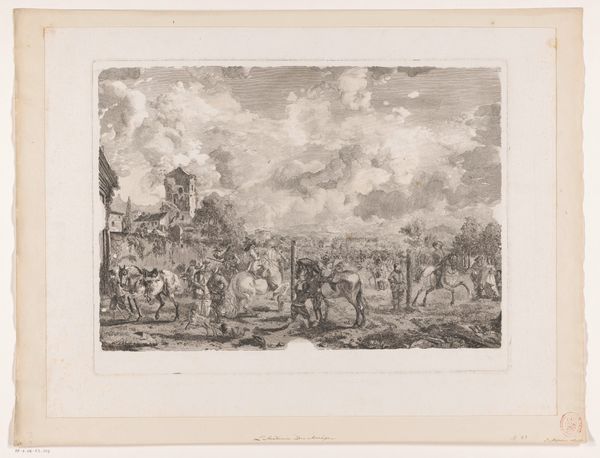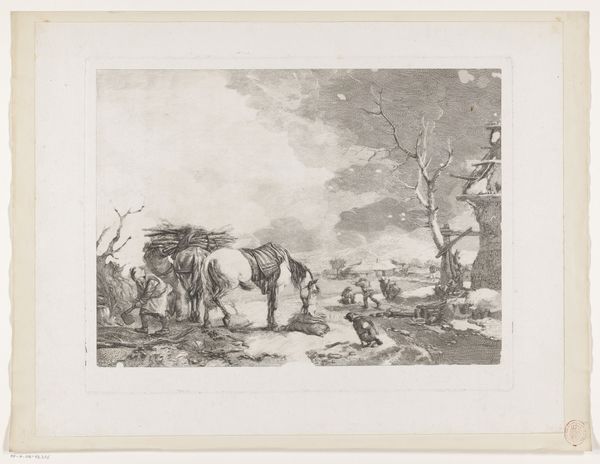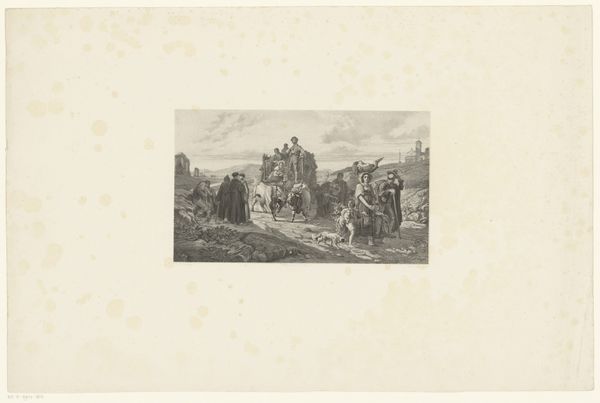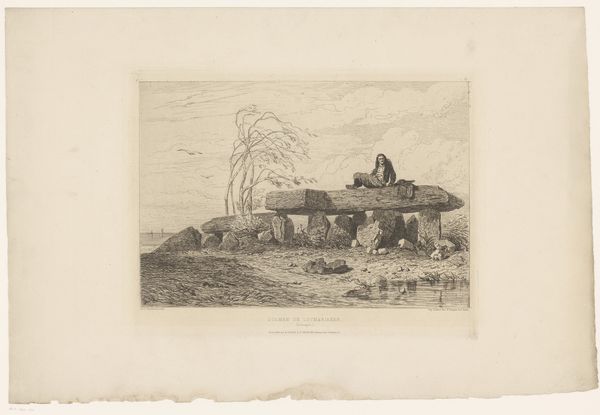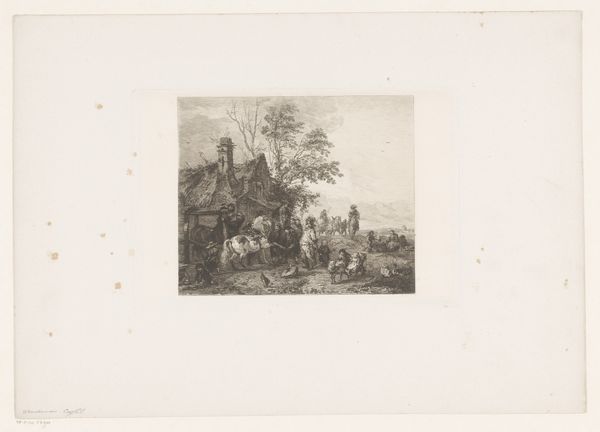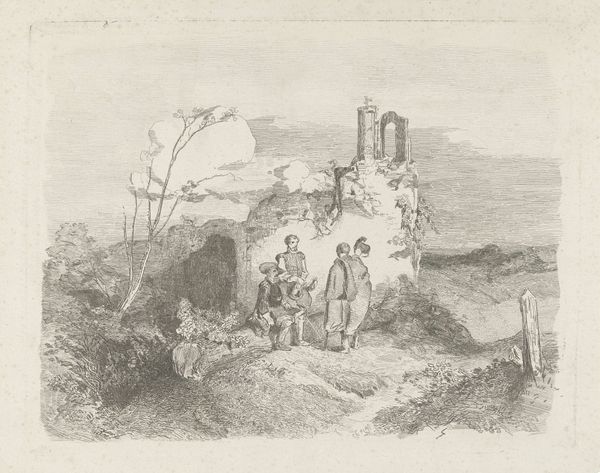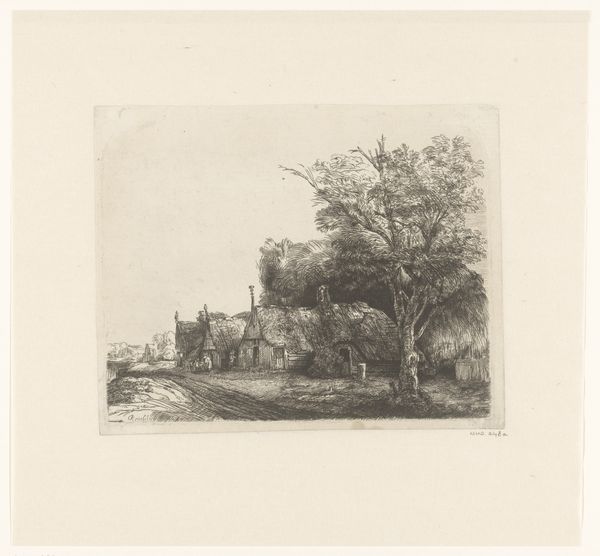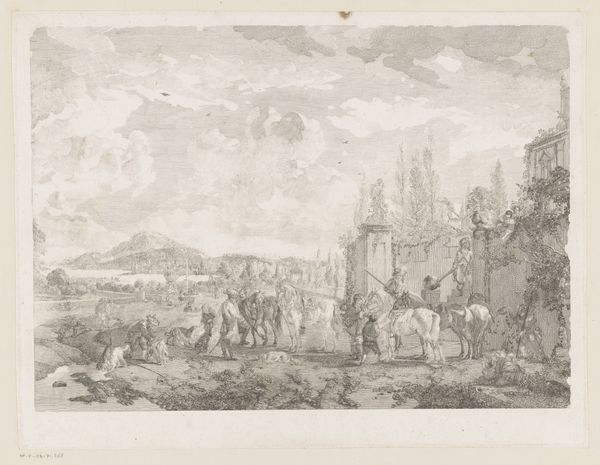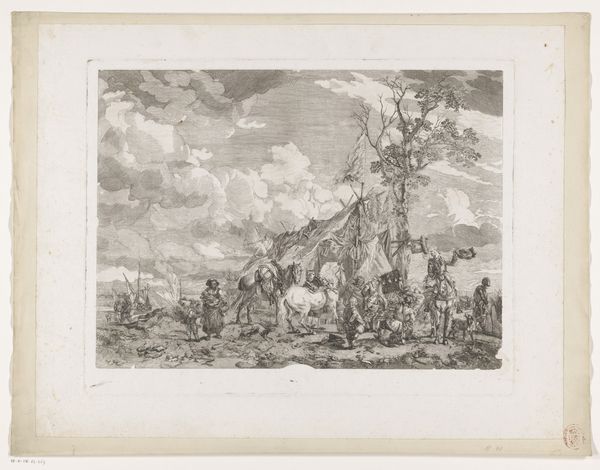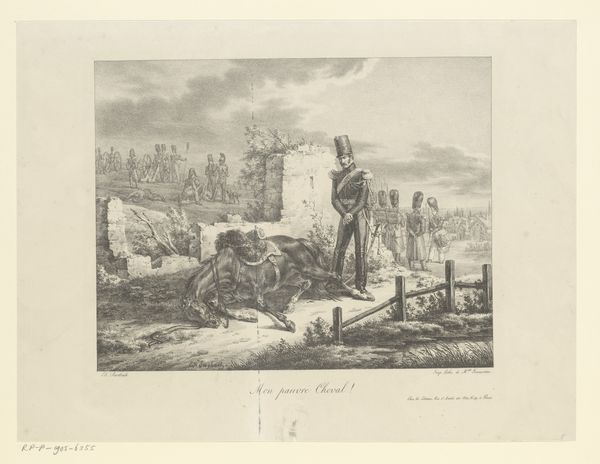
print, etching
#
baroque
# print
#
etching
#
landscape
#
etching
#
genre-painting
Dimensions: height 368 mm, width 475 mm
Copyright: Rijks Museum: Open Domain
Editor: Here we have Jean Moyreau’s etching, "Marskramers voor een huis," made sometime between 1726 and 1762. The composition feels very traditional. What can you tell me about this scene? Curator: Well, let’s consider this through a lens of social history. While ostensibly a simple genre scene, it actually subtly represents complex power dynamics within 18th-century Dutch society. Editor: Power dynamics? Curator: Yes. Think about the placement of the figures. The mounted figures, presumably the "marskramers" or peddlers, occupy a higher plane than the seated group, right? This visual hierarchy can be interpreted as reflecting the peddlers' higher, mobile, and likely male social position compared to a more grounded and sedentary group, possibly women and children. Editor: I see. And the house in the background? Curator: Exactly! The dilapidated house, in contrast to the mobile traders, suggests a level of economic vulnerability. This creates a binary between mobility and stagnation, affluence and relative poverty. Consider how deeply class and gender intersect here. Who are the people at the margins? Editor: It’s interesting how much information is conveyed in what seems like a simple everyday scene. It's almost like a silent commentary. Curator: Precisely. And don't overlook the landscape. The natural world isn’t merely a backdrop. It interacts with these social arrangements and embodies cultural concepts regarding labor, class, and access to resources. This reminds us how profoundly artwork acts as a witness of its time. Editor: This makes me appreciate the work more deeply now, thinking about those contexts and social commentary of Baroque era. Curator: Absolutely. And hopefully, this makes us reflect on how inequalities of mobility and class persist even now.
Comments
No comments
Be the first to comment and join the conversation on the ultimate creative platform.
